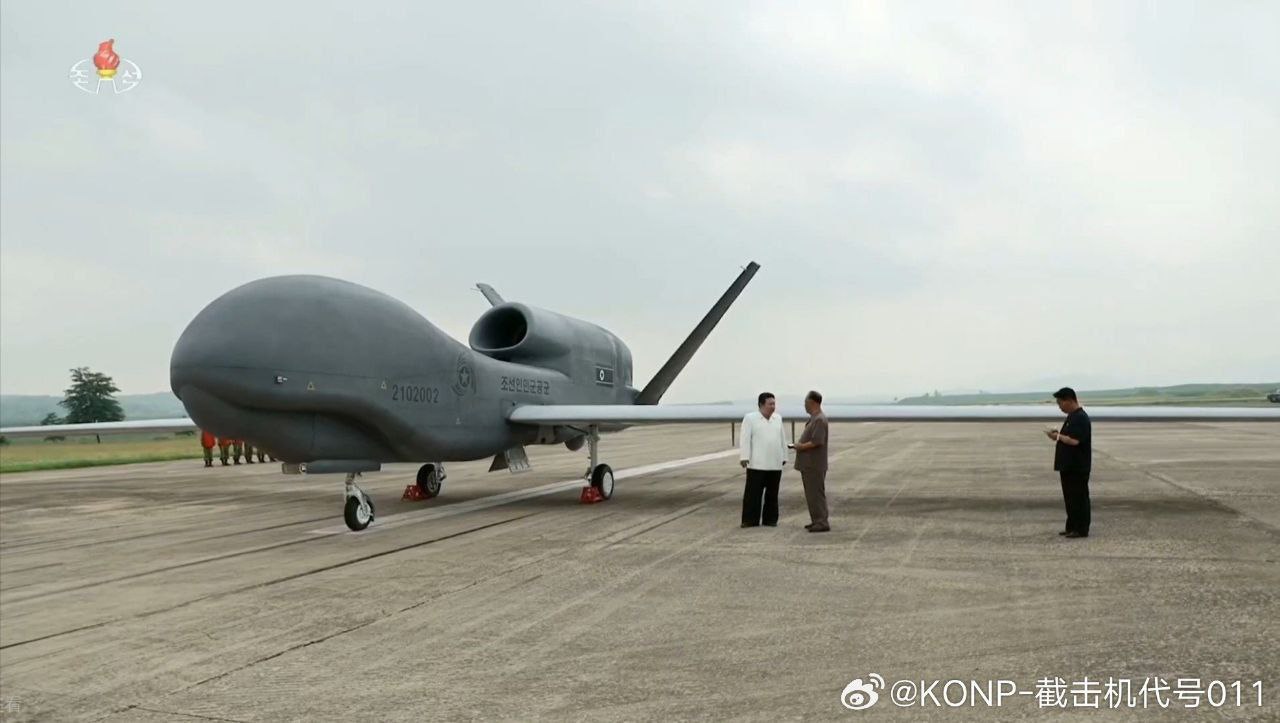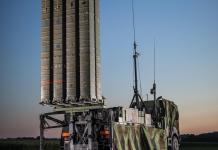On January 15, multiple images began circulating on social media platforms, depicting North Korean leader Kim Jong Un inspecting what is believed to be the country’s most advanced drone.
The unmanned aerial vehicles, Saetbyol-4 and Saetbyol-9, resemble renowned US-manufactured RQ-4 Global Hawk and MQ-9 Reaper drones.
The existence of these drones first came to light in satellite imagery in June 2023, with the official unveiling taking place during North Korea’s Weapons and Equipment Exhibition held in Pyongyang in July 2023.
The exhibition, attended by Kim Jong-un and Russian Minister of Defense Sergei Shoigu, captured the attention of the international community.
New images, initially posted on the Chinese social media platform Weibo, appear to be stills from an undisclosed inspection by Kim Jong-un. However, the exact date of these photographs remains uncertain, leaving many questions about the timeline of North Korea’s drone development.
North Korean state media has identified the Saetbyol-4 as a “strategic reconnaissance drone,” while the Saetbyol-9 is labeled a “multi-purpose attack drone.”

The Saetbyol-4, with a wingspan of approximately 115 feet, closely mirrors the design of the US RQ-4, suggesting capabilities for high-altitude flight over extended distances, as previously reported by EurAsian Times.
On the other hand, the Saetbyol-9, boasting a wingspan of around 65 feet, shares similarities with the prop-driven US MQ-9.
While specific details about the drones’ specifications and mission profiles remain undisclosed, their resemblance to the RQ-4 and MQ-9 families implies potential capabilities for strategic reconnaissance and multi-purpose attacks.
Notably, the Saetbyol-9, akin to the MQ-9, was showcased with two different types of missiles, one bearing a striking resemblance to the widely-used US-made AGM-114 Hellfire missile utilized in air-to-ground missions.
A short video clip shared online earlier displays the drone launching missiles resembling Hellfire, though the credibility of the footage remains uncertain.
South Korea’s Global Hawk Vs North Korea’s Saetbyol-4
While North Korea has undertaken the development of a drone mirroring the design of the US-manufactured RQ-4 Global Hawk, it’s noteworthy to emphasize that its adversary, South Korea, has adopted and operates the technologically advanced US-manufactured Global Hawk.
The divergence in technological prowess becomes even more apparent as we delve into the details of the two nations’ drone programs.
The RQ-4A Global Hawk, a stalwart in intelligence, surveillance, and reconnaissance (ISR) missions, boasts an impressive endurance of over 30 hours.
Armed with a suite of cutting-edge sensors, including imagery intelligence (IMINT), signals intelligence (SIGINT), and moving target indicator (MTI) sensors, the drone can efficiently survey vast areas—up to 40,000 square miles per day, equivalent to the size of South Korea or Iceland.
In 2011, South Korea signed a major deal worth 965.9 billion won (US$847 million) to acquire four RQ-4 Block 30 Global Hawks, with the first one arriving in December 2019 and the remaining delivered by September 2020.

The significance of the Global Hawk in South Korea was further solidified in 2020 with the establishment of a dedicated Air Force reconnaissance unit.
This unit, entrusted with operating the RQ-4 Global Hawk Aircraft, plays a crucial role in managing key reconnaissance assets and fortifying South Korea’s intelligence and surveillance capabilities.
Meanwhile, North Korea’s claims of replicating the US-manufactured Global Hawk raise questions about the true extent of its capabilities. Experts caution against assuming parity based on visual similarities alone.
As of now, Pyongyang has not provided tangible evidence of possessing the capability to manufacture sophisticated airframes, make advancements in sensor technology, or establish robust communication systems.
These crucial elements are integral prerequisites for the emulation of US medium and high-altitude systems, highlighting a notable gap in North Korea’s technological prowess in this specific domain.
One noticeable feature shared by North Korea’s drone, named Saetbyol-4, and the authentic Global Hawk is the distinct fairing at the top front of the airframe.
However, North Korea lacks a satellite communications capability akin to that housed in the fairing. External service providers would be required for any future operational use of this feature.
Stephen Pendergast, a former Systems Engineer at General Atomics ASI, highlighted that while North Korean drones may visually resemble their US counterparts, duplicating the unique components—considered the “secret sauce” behind the Reaper’s performance edge—is a challenging task.
Due to these intricate challenges, he stressed that the actual performance of North Korean drones cannot be guaranteed to match that of the original models.
As tensions persist on the Korean Peninsula, the technological disparities between South Korea’s advanced Global Hawk fleet and North Korea’s purported replica underscore the critical importance of robust intelligence capabilities in maintaining regional stability.
- Contact the author at ashishmichel(at)gmail.com
- Follow EurAsian Times on Google News




